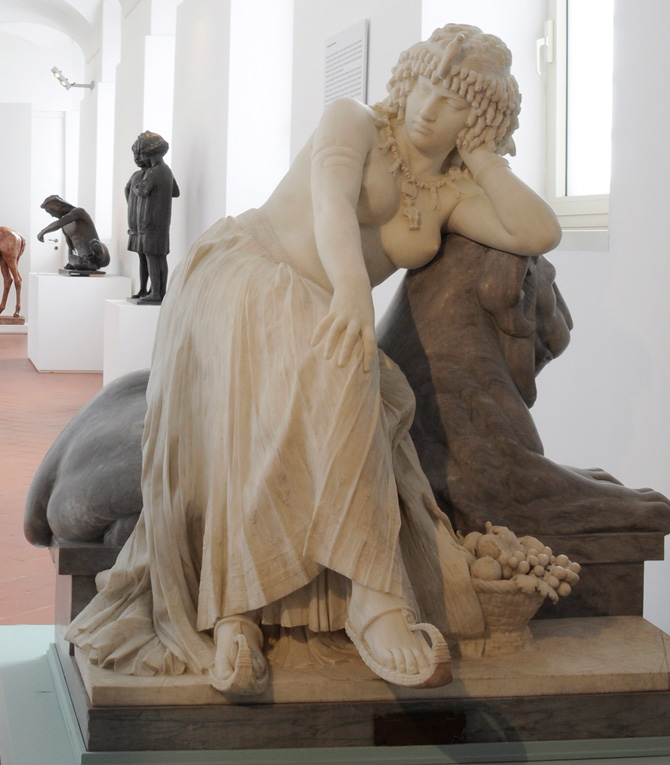Symbols of the Xiongnu, Sarmatians, Scythians, and Alans from various branded objects 2nd C. BCE - 2nd C. CE
"Starting in the 1950s, the source base for the study of the branding of cattle has substantially broadened. One of the Sarmatian burials of the lower Don contained a unique instrument for branding an animal (Raev 1979, pp. 207–08, Fig 3.9; Yatsenko 2001, p. 12, Fig. 1.1). A male burial of the last quarter of the 1st century CE not far from the village of Porogi near the Dniester yielded a silver cup with a handle in the form of a horse with brands on the right shoulder and left flank [Figs. 3.1, 6.2]. In this same complex was a gold torque with ends shaped like horse heads. One of the heads has a brand on the cheek (Simonenko and Lobai 1991, Fig. 16.1,2; Simonenko 1991, p. 316, Nos. 154, 157). One should include here a long-known gold bracelet accidentally discovered on the shore of the Bug estuary. Its ends, analogous to those of the torque from Porogi, also are shaped like horse heads, on one of which is a brand (Solomonik 1959, pp. 131–32; Voroniatov 2013, Fig. 1.2). Additional evidence regarding the tradition of branding Sarmatian horses may be found in numerous examples of Roman-period ceremonial horse harness, whose decoration includes Sarmatian tamgas (Voroniatov 2013). S. A. Yatsenko’s idea (2001, p. 13) that details of horse gear can duplicate or imitate a real brand on the body of the horse merits close attention.
As unusual as the buckle from Mongolia is the depiction of a bear on a wooden harp [Fig. 6.3] from the interesting complex of the end of the 1st–beginning of the 2nd centuries CE not far from Olbia (Simonenko 1999, pp. 111–14, Figs. 2, 3; Simonenko 2004, pp. 209– 21, Abb. 7). In toto there are 32 tamgas on the harp, six of which are incised on the figure of the bear. A.V. Simonenko emphasized (1999, p. 112) that the tamgas are placed in the same locations as the signs on the figure of a horse which served as the handle for the silver cup from Porogi [Figs. 3.1, 6.2].
I would propose that the depiction of a branded wild animal (a bear) on Alano-Sarmatian materials is related to the depiction of a fantastic animal with a brand in Xiongnu antiquities. It is possible that the meaning attached to signs specifically on such creatures relates to something other than the pragmatic tradition of branding cattle. This phenomenon, on which I will not dwell in greater detail, requires special study. I would merely note that early medieval depictions of wild animals and mythical creatures with a brand are attested in the territory of Inner Asia and Asia Minor (Boardman 2010, Fig. 19; Samashev and Bazylkhan 2010, p. 311).
In discussing the tradition of branding cattle along the northern Black Sea littoral, E. I. Solomonik (1957, pp. 215–17) provides information about this practice in archaic Greece, a practice which might well also have existed in the Greek Black Sea colonies. Clearly horses and cattle, branded with Sarmatian tamgas and, correspondingly, their depictions appear in the steppes of the northern Black Sea littoral and in the Bosporan region with the arrival of a new wave of nomadic tribes in the first century CE.
The objects examined here in the three categories demonstrate not only the similarity of several types of tamgas of Inner Asia and Sarmatia but also suggest common features of ritual practice among the Xiongnu and the Alano-Sarmatians. All three categories of objects have characteristics which are not merely the inherent qualities found in artefacts of daily life.
The astragalus with a tamga found in the burned layer of the Bosporan fortress of Artezian [Fig. 5.5] also has been interpreted as a cult object (Vinokurov 2007). In addition to the astragalus with a tamga, in the same layer of the Liubimov settlement on the lower Dnieper [Fig. 5.3] was a whetstone inscribed with three tamgas. Scholars have attributed a cultic and magic purpose to unusual whetstones of the Scytho-Sarmatian period and specifically to whetstones with tamgas (Griaznov 1961; Anikeeva and Iablonskii 2012, p. 52; Voroniatov 2012)."
-Sergey V. Voroniatov, State Hermitage Museum - Connections between Central Asia and the Northern Littoral of the Black Sea: Evidence from objects with tamgas.
 |
| Xiongnu dragon or wolf belt buckle. |
 |
| This one kind of reminds me of the symbol of Chach (Tashkent), though it's not perfectly identical. |
Source/Quote:
https://www.academia.edu/2492157/Belt_Plaques_as_indicator_of_East_West_relations
https://www.academia.edu/72929792/Xiongnu_Encyclopedia_Ed_Ts_Turbat_Ulaanbaatar_2013











Comments
Post a Comment